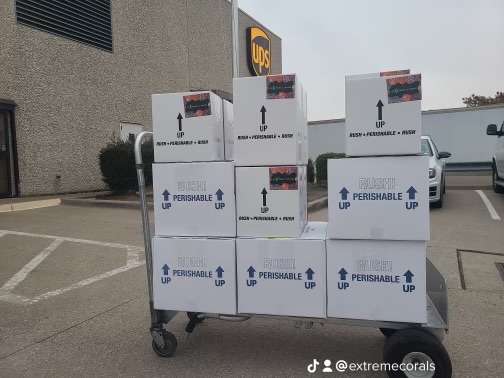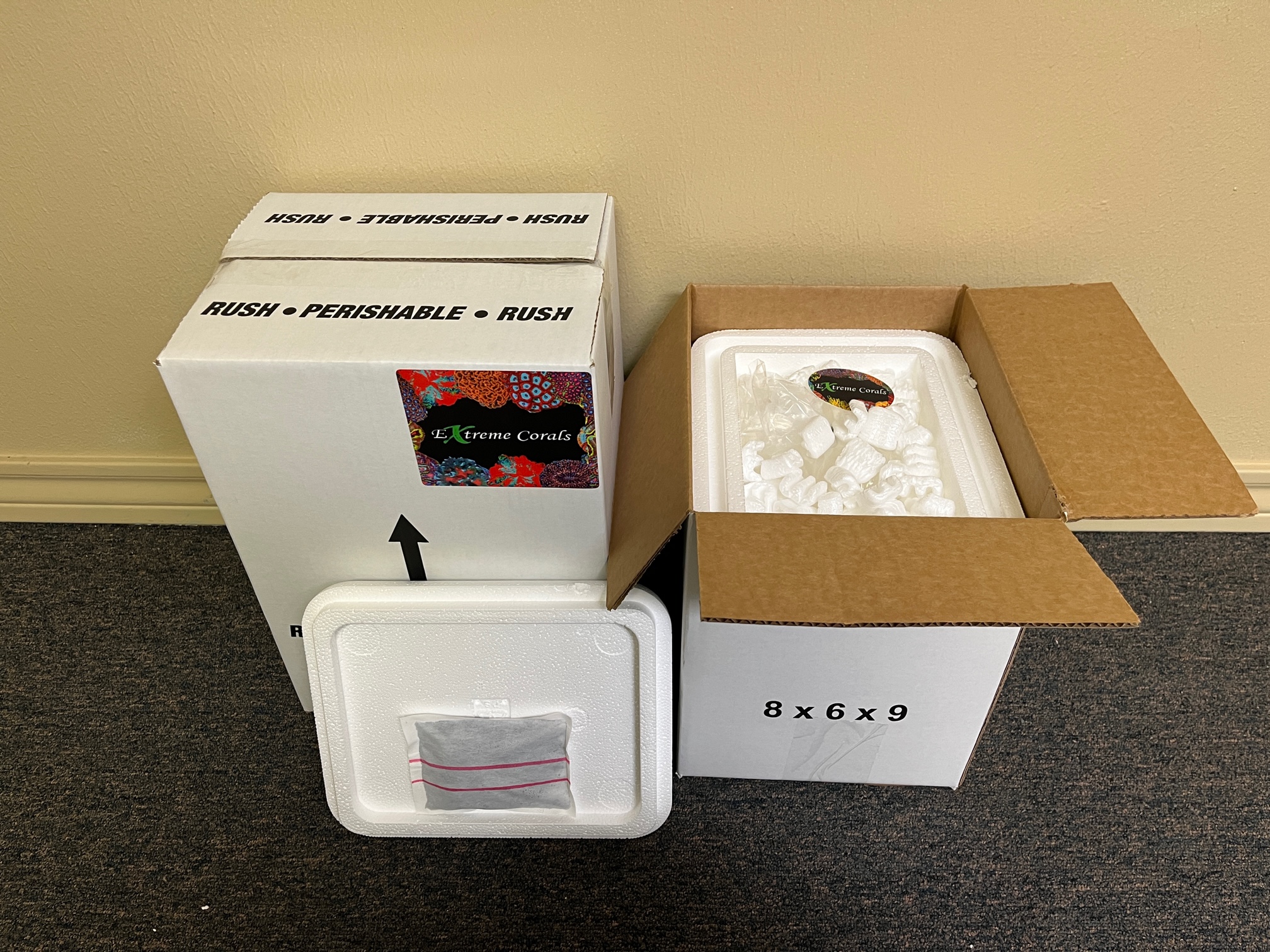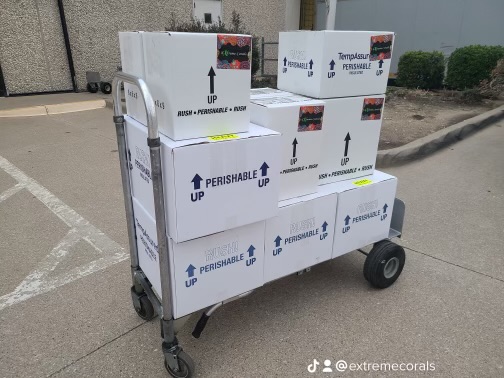Extreme Corals News and Updates
Shipping live Corals
Ensuring the Health and Happiness of Corals Through Nighttime Journeys
Explore vital overnight shipping practices for coral care, from packaging perfection to acclimation excellence. Elevate your reef aquarium experience!
by scott Shiles • November 10, 2023
Best Practices for Overnight Shipping of Corals
In the world of reef aquariums, the demand for vibrant and diverse corals has led to the rise of overnight shipping as a preferred method of transporting these delicate marine organisms. Ensuring the well-being of corals during transit is a critical aspect of the hobby, and adhering to best practices in overnight shipping is essential for both suppliers and enthusiasts. Let's dive into the key considerations and recommendations for successfully transporting corals overnight.
Quality Packaging

The foundation of successful overnight shipping begins with quality packaging. Corals are sensitive organisms, and their packaging should provide a secure and stable environment. Consider using insulated containers with styrofoam inserts to regulate temperature. Use cushioning materials like bubble wrap to prevent movement within the package, reducing the risk of damage.
Temperature Control
Maintaining the right temperature during transit is crucial for the health of corals. Extreme temperatures can be detrimental, so it's important to include heat or cold packs depending on the weather conditions. Monitor local and destination weather forecasts, and adjust the packaging accordingly to ensure the corals arrive at the optimal temperature range.

Water Sealing
Corals require a specific water environment to thrive. Properly sealing the water in bags is vital to prevent leaks and maintain stable water conditions. Double-bagging with sturdy, leak-proof bags can add an extra layer of protection. Ensure that the bags are securely closed to prevent any spillage during transit.
Adequate Oxygen Supply
Corals, like all living organisms, require oxygen. Ensure that the bags containing corals have enough air for the journey. Avoid overpacking to allow for sufficient oxygen exchange. Some suppliers also use pure oxygen injections to increase oxygen levels within the bags during shipping.
Labeling and Documentation
Accurate labeling is crucial for both the shipper and the recipient. Clearly mark the package as containing live corals and include any special handling instructions. Provide detailed documentation on the contents of the shipment, including the species of corals and any specific care instructions.
Reliable Courier Services
Choose a reliable and reputable courier service with experience in shipping live animals. Ensure that the selected service has a track record of handling delicate cargo with care and offers overnight shipping options. Fast and reliable delivery minimizes stress on the corals and increases the chances of a successful transition. We at Extreme Corals utilize UPS for all shipping needs.
Communication with Recipient
Maintain open communication with the recipient. Notify them of the shipping date and expected arrival time. Provide tracking information and contact details for both the supplier and the courier in case any issues arise during transit. With Extreme Corals, you will recieve a tracking confirmation email as soon as your order is placed.
Acclimation Process
Upon arrival, it's crucial for the hobbyist to acclimate the corals gradually to their new environment. Follow proper acclimation procedures to help corals adjust to changes in water conditions, temperature, and lighting.
By adhering to these best practices, suppliers and hobbyists can contribute to the sustainability of the coral trade and ensure the well-being of these fascinating marine organisms during the overnight shipping process. With careful attention to detail and collaboration between suppliers and enthusiasts, the beauty of coral reefs can be enjoyed in aquariums worldwide.

